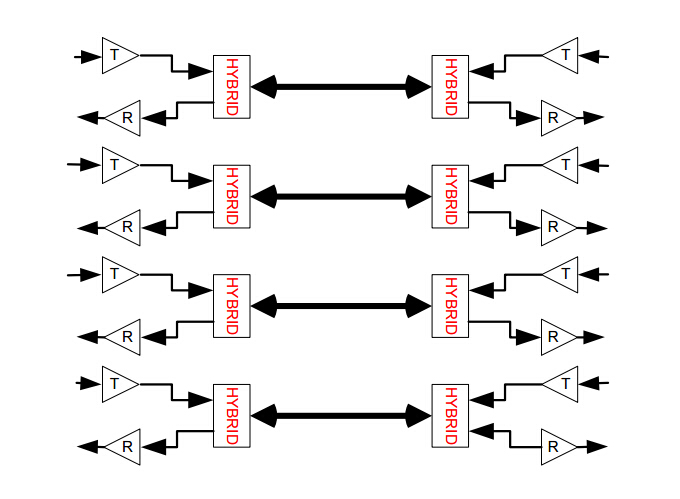Various copper and fiber choices are available on the market today. When deciding a cabling system, network managers should know how to choose the most appropriate cabling system for their network infrastructure in the long run. Many of the cabling installed today inside buildings is Category 5. Many factors, like punch down blocks, and patch panel connections, affect the performance of 1000BASE-T technology if not correctly implemented. This article gives an introduction to 1000BASE-T Gigabit Ethernet operation over the installed base of Category 5 cabling.
1000BASE-T and Category 5 Cabling
1000BASE-T is a type of gigabit Ethernet networking technology that uses copper cables as a medium. 1000BASE-T uses four pairs of Category 5 unshielded twisted pair cables to achieve gigabit data rates. There should be no need to replace existing Category 5 cabling to use 1000BASE-T. The standard is designated as IEEE 802.3ab and allows 1Gbps data transfers for distances of up to 330 feet. 1000Base-T came into wide use in 1999, gradually replacing fast Ethernet for wired local networks simply because it was 10 times as fast. Equipment and cables are very similar to previous Ethernet standards and by 2011 were very common and economical. These were the biggest factors that ensured this standard's wide acceptance. The 1000BASE-T product is designed to operate over Category 5 cabling. The image below shows how 1000BASE-T works.

Gigabit Bandwidth over Category 5 Cabling
1000BASE-T uses a symbol rate of 125 Mbaud (A 125 Mbaud symbol rate is required because 100BASE-TX uses 4B/5B coding), but it uses all four pairs for the link and a more sophisticated five-level coding scheme. In addition, 1000BASE-T sends and receives simultaneously on each pair. Combining 5-level coding and 4 pairs allows 1000BASE-T to send one byte in parallel at each signal pulse. 4 pairs 125 Msymbols/second X 2 bits/symbol = 1Gbps.
Problems During Cable Installation
Of course, it isn't quite this simple. In addition to moving the symbols across the link, 1000BASE-T must also deal with the effects of return loss and crosstalk, and other factors.
Return loss measures the amount of reflected signal energy resulting from impedance changes in the cabling link. If too much energy is reflected back onto the receiver, the device does not perform optimally. Factors that affect the return loss are:
- The number of transition points, as there is a connection through an RJ-45 to another connector, a patch panel, or device at each transition point.
- Removing the jacket that surrounds the four pairs of twisted cable. When RJ-45 connections are made, this is minimized to 1 1/4 inch (32 mm).
- Untwisting any pair of the twisted-pair cabling. It is important that any untwisting be minimized to 3/8 inch (10 mm) for RJ-45 connections.
- Cabling or bundling of multiple Category 5 cables. If not correctly implemented, this can adversely affect all cabling settings.
Crosstalk is unwanted signals coupled between adjacent wire pairs. Since 1000BASE-T uses all four wire pairs, each pair is affected by crosstalk from the adjacent three pairs. Near-end crosstalk (NEXT) is crosstalk that appears at the output of a wire pair at the transmitter (near) end of the cable. Far-end crosstalk (FEXT) is a measure of the unwanted signal coupling from a transmitter at the near-end into a neighboring pair measured at the far-end. Crosstalk is characterized in reference to the transmitter.
Conclusion
For optimum performance of your 1000BASE-T product, it is important to fully qualify your cable installation and ensure that it meets or exceeds Category 5 specifications. Fiberstore provides various Category 5 cables and 1000BASE-T optical transceivers for your applications. For example, Finisar FCLF-8520-3 1000BASE-T copper SFP RJ-45 transceiver, and Cisco GLC-T 1000BASE-T SFP copper RJ-45 transceiver, are compliant with the Gigabit Ethernet and 1000BASE-T standards as specified in IEEE 802.3 and 802.3ab. These SFP transceivers link your switches and routers to the network. They are 100% functionally tested, and compatibility is guaranteed.













